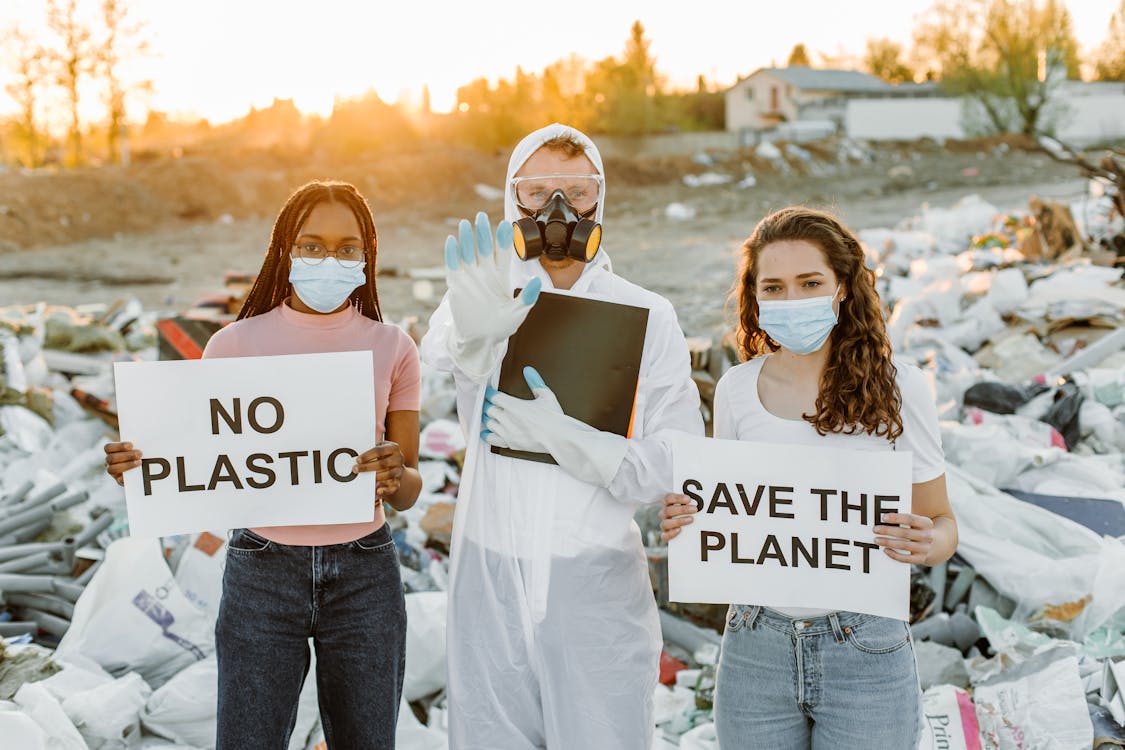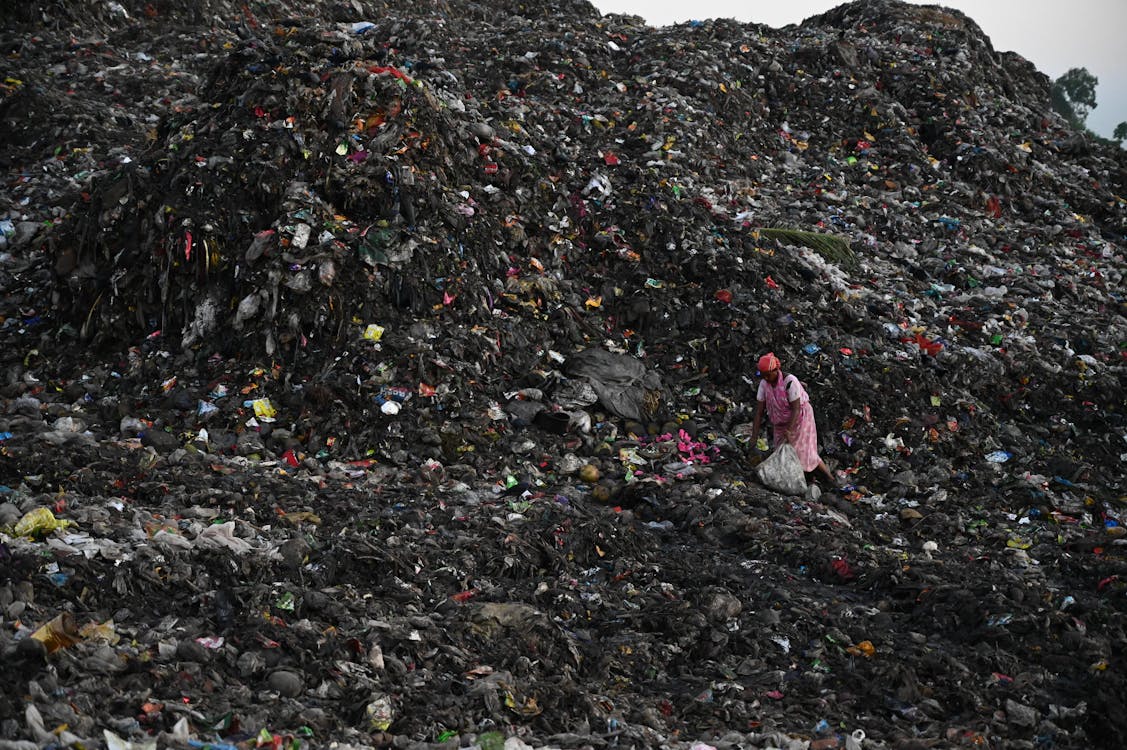Environmental pollution is one of the biggest challenges that we are currently facing. Pollution occurs when harmful substances such as chemicals, waste, or radiation enter the environment and cause damage to living organisms. Unfortunately, human beings are not immune to the effects of pollution. In fact, environmental pollution has been linked to a wide range of health problems, both acute and chronic. In this blog post, we will discuss how environmental pollution affects human health and the measures that can be taken to mitigate its impact.

Air Pollution
Air pollution is a major contributor to human health problems.
It is caused by the release of harmful gases and particles into the air from sources such as factories, vehicles, and wildfires. When we breathe in polluted air, these harmful substances can enter our lungs and cause respiratory problems, such as asthma and chronic obstructive pulmonary disease (COPD). In addition, air pollution has been linked to heart disease, stroke, and even cancer.
Water Pollution
Water pollution is another serious health threat caused by human activity.
When harmful substances such as chemicals, pesticides, and sewage enter our water sources, they can contaminate drinking water and cause a wide range of health problems. For example, exposure to contaminated water can cause gastrointestinal problems such as nausea, vomiting, and diarrhea. Long-term exposure to contaminated water has also been linked to cancer, birth defects, and developmental delays in children.
Soil Pollution
Soil pollution occurs when harmful substances such as heavy metals, pesticides, and chemicals are released into the soil.
This can happen when industrial waste is disposed of improperly or when agricultural chemicals leach into the soil. When humans come into contact with contaminated soil, it can cause skin irritation, respiratory problems, and even cancer.
Noise Pollution
Noise pollution is a less well-known but still significant contributor to human health problems. Exposure to loud noise can cause hearing loss and tinnitus. It can also increase stress levels and contribute to heart disease and other health problems.
Light Pollution
Light pollution is another type of pollution that is often overlooked but can have a significant impact on human health. Exposure to artificial light at night can disrupt our natural sleep patterns and contribute to a range of health problems, including obesity, diabetes, and depression.
Climate Change
Climate change is another consequence of environmental pollution that poses a significant threat to human health. Rising temperatures, more frequent and severe weather events, and increased air pollution are all expected to have negative impacts on human health. For example, extreme heat can cause heatstroke, dehydration, and other heat-related illnesses. Climate change is also expected to increase the spread of disease-carrying insects such as mosquitoes and ticks.

Prevention and Mitigation Measures
Fortunately, there are many measures that can be taken to prevent and mitigate the impact of environmental pollution on human health. Here are some examples:
• Reduce Emissions: One of the most effective ways to reduce the impact of environmental pollution on human health is to reduce emissions of harmful substances such as greenhouse gases, particulate matter, and other air pollutants. This can be achieved by promoting the use of renewable energy sources such as wind and solar power and by improving the efficiency of vehicles and other machines.
• Proper Waste Disposal: Proper disposal of waste is essential to prevent soil and water pollution. Governments and industries should work together to develop and implement waste management policies that prioritize recycling and other sustainable disposal methods.
• Clean Water Sources: Clean water sources are essential for human health. Governments and industries should work together to protect water sources from contamination and to develop effective water treatment systems.
• Noise Reduction: To reduce the impact of noise pollution on human health, governments and industries should implement noise reduction policies, such as building sound barriers, restricting noisy activities, and promoting the use of quieter machinery.
• Light Reduction: To reduce the impact of light pollution on human health, governments

• Climate Change Mitigation: To mitigate the impact of climate change on human health, governments and industries should work together to reduce greenhouse gas emissions, invest in renewable energy sources, and promote energy efficiency. Additionally, individuals can take action by reducing their carbon footprint through actions such as reducing energy consumption, using public transportation, and eating a plant-based diet.
• Education and Awareness: Education and awareness are essential in promoting an understanding of the impacts of environmental pollution on human health. Governments, industries, and non-profit organizations should work together to educate the public about the importance of environmental conservation, pollution prevention, and sustainable practices.
Effects of Environmental Pollution on Human Health:
- Respiratory problems (e.g. asthma, COPD) due to air pollution
- Gastrointestinal problems (e.g. nausea, vomiting, diarrhea) due to water pollution
- Skin irritation, respiratory problems, and cancer due to soil pollution
- Hearing loss, tinnitus, and heart disease due to noise pollution
- Disruption of sleep patterns, obesity, diabetes, and depression due to light pollution
- Heatstroke, dehydration, and other heat-related illnesses due to climate change
- Increased spread of disease-carrying insects (e.g. mosquitoes, ticks) due to climate change
Preventive Measures for Environmental Pollution:
- Reduce emissions of harmful substances such as greenhouse gases and air pollutants
- Develop and implement waste management policies that prioritize recycling and other sustainable disposal methods
- Protect water sources from contamination and develop effective water treatment systems
- Implement noise reduction policies, such as building sound barriers and restricting noisy activities
- Implement light reduction policies, such as installing more efficient and directed lighting
- Work to reduce greenhouse gas emissions, invest in renewable energy sources, and promote energy efficiency
- Educate the public about the importance of environmental conservation, pollution prevention, and sustainable practices.

- Promote the use of electric or hybrid vehicles to reduce air pollution.
- Implement sustainable agricultural practices that reduce soil pollution and minimize the use of pesticides and fertilizers.
- Develop and promote green spaces in urban areas, which can help reduce air pollution, improve mental health, and promote physical activity.
- Promote sustainable land use practices that protect natural habitats and reduce the impacts of development on the environment.
- Support the use of renewable energy sources such as solar and wind power, which can reduce greenhouse gas emissions.
- Promote the use of public transportation, biking, and walking to reduce air pollution and greenhouse gas emissions.
- Implement policies to reduce the use of single-use plastics, which can pollute oceans and harm marine life.
- Promote the use of energy-efficient appliances, such as LED light bulbs and Energy Star-rated appliances, which can reduce energy consumption and greenhouse gas emissions.
- Develop and enforce regulations on industrial pollution, including limiting emissions and properly disposing of hazardous waste.
- Work to reduce deforestation and promote reforestation efforts, which can help reduce greenhouse gas emissions and protect biodiversity.
Greenhouse gas emissions and protection biodiversity
- Invest in renewable energy sources, such as solar, wind, and geothermal power, which emit significantly fewer greenhouse gases than fossil fuels.
- Promote energy efficiency in buildings by improving insulation, using energy-efficient appliances, and implementing smart building technologies.
- Encourage the adoption of sustainable agricultural practices, such as agroforestry and integrated pest management, that can reduce greenhouse gas emissions and promote biodiversity.
- Promote sustainable forestry practices, such as selective logging and reforestation efforts, which can help mitigate greenhouse gas emissions and preserve biodiversity.
- Protect marine habitats and promote sustainable fishing practices to preserve marine biodiversity and prevent the release of greenhouse gases from ocean ecosystems.
- Promote the use of electric vehicles, biking, and walking to reduce transportation-related greenhouse gas emissions and support active and healthy lifestyles.
- Develop policies that support sustainable urban development, including green infrastructure such as parks and green roofs, which can help reduce urban heat islands and promote biodiversity.
- Implement policies that regulate industrial emissions, such as requiring the use of cleaner production technologies and imposing emissions standards.
- Work to reduce food waste and promote sustainable food systems, including local and organic food production, which can reduce greenhouse gas emissions and protect biodiversity.
- Invest in research and development of new technologies and innovations that can help reduce greenhouse gas emissions and protect biodiversity.
These actions require a collaborative effort from individuals, communities, businesses, and governments. By working together, we can reduce greenhouse gas emissions and protect biodiversity, both of which are critical for preserving the health of the planet and its inhabitants.

- Promote the use of public transportation and encourage the development of clean transportation alternatives, such as hydrogen-powered vehicles or electric buses and trains.
- Invest in sustainable urban design and planning, such as creating pedestrian-friendly cities, developing public transportation networks, and promoting mixed-use zoning.
- Encourage the adoption of sustainable agricultural practices, such as reducing tillage, rotating crops, and using cover crops, which can improve soil health, reduce emissions, and promote biodiversity.
- Promote sustainable forestry management practices, such as selective logging, reforestation, and conservation of high-biodiversity forests, which can help sequester carbon and preserve habitats for a range of species.
- Encourage the use of energy-efficient building designs, such as passive solar heating, natural ventilation, and green roofs, which can reduce energy consumption and greenhouse gas emissions.
- Work to reduce plastic pollution and promote sustainable waste management practices, such as recycling, composting, and waste-to-energy technologies.
- Invest in green technologies, such as carbon capture and storage, and explore the potential of emerging technologies, such as renewable hydrogen, to reduce emissions.
- Promote the conservation and restoration of natural ecosystems, such as wetlands, forests, and grasslands, which can sequester carbon, protect biodiversity, and provide other benefits such as flood control and water filtration.
- Encourage sustainable tourism practices, such as reducing the use of single-use plastics, minimizing waste, and supporting local conservation efforts.
- Work to address the root causes of climate change, such as overconsumption and overproduction, and promote sustainable lifestyles and consumption patterns.

Environmental Pollution Affects
- Exposure to air pollution can cause a range of health problems, including respiratory infections, heart disease, stroke, and lung cancer. Fine particulate matter, which is released by sources such as transportation and industrial activities, can penetrate deep into the lungs and cause chronic respiratory problems.
- Exposure to water pollution can lead to gastrointestinal illnesses, skin rashes, and other health problems. Polluted water can contain harmful pathogens, toxic chemicals, and heavy metals that can harm human health.
- Exposure to soil pollution can lead to lead poisoning, which can cause developmental delays and cognitive problems, especially in children. Contaminated soil can also expose individuals to toxic chemicals that can cause cancer, reproductive problems, and other health issues.
- Exposure to noise pollution can cause hearing loss, tinnitus, and other health problems. Chronic exposure to loud noises can also increase the risk of heart disease, sleep disturbances, and other health issues.
- Exposure to light pollution can disrupt sleep patterns and lead to other health problems, such as obesity and depression.
- Exposure to radiation pollution can increase the risk of cancer and other health problems. Radiation can come from natural sources, such as radon gas, or from human activities, such as nuclear power plant accidents.
- Climate change, which is largely caused by greenhouse gas emissions, can also have significant impacts on human health. These impacts include increased heat-related illnesses, more frequent and severe weather events, and the spread of infectious diseases.
It is important to note that the impacts of environmental pollution on human health are often disproportionately felt by marginalized communities, such as low-income and minority populations. Addressing environmental pollution requires a commitment to environmental justice and equitable access to clean air, water, and land for all individuals and communities.